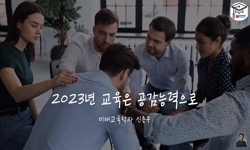The purpose of this study was to analyze the contents related to empathy that appeared in the 2022 revised social studies curriculum and Middle School Social Textbooks and to derive implications. As a result of the study, it was confirmed that in the ...
http://chineseinput.net/에서 pinyin(병음)방식으로 중국어를 변환할 수 있습니다.
변환된 중국어를 복사하여 사용하시면 됩니다.
- 中文 을 입력하시려면 zhongwen을 입력하시고 space를누르시면됩니다.
- 北京 을 입력하시려면 beijing을 입력하시고 space를 누르시면 됩니다.

2022 개정 사회과 교육과정과 중학교 사회 교과서에 나타난 공감 관련 내용 분석 = Analysis of Empathy-related Content in the 2022 Revised Social Studies Curriculum and Middle School Social Textbooks
한글로보기https://www.riss.kr/link?id=A109644494
- 저자
- 발행기관
- 학술지명
- 권호사항
-
발행연도
2025
-
작성언어
Korean
- 주제어
-
등재정보
KCI등재
-
자료형태
학술저널
- 발행기관 URL
-
수록면
167-187(21쪽)
- 제공처
-
0
상세조회 -
0
다운로드
부가정보
다국어 초록 (Multilingual Abstract)
As a result of the study, it was confirmed that in the revised curriculum, comments related to empathy decreased compared to the 2015 revised curriculum, but changed in the direction of emphasizing cultural diversity and empathy for social minorities. In addition, as a result of analyzing the three units of the middle school social textbook, personal empathy and social empathy appeared together, and social empathy activities accounted for a higher proportion. Personal empathy was centered on social discrimination and conflict issues in activities related to locality, globalization, understanding religion and cultural diversity, and social empathy. In particular, in the ‘Human and Social Life’ unit, activities to understand the positions of social minorities and seek solutions appeared actively. As a result of the analysis of the developmental stage of social empathy, it was rare that only the exposure stage was independently presented in the textbook, and most of them were linked to the explanation and experience stage. In the explanation stage, there were many activities to analyze and understand the structural causes of social problems, and in the experience stage, students were organized to develop practical empathy skills through role plays, case studies, and problem-solving search. However, in the geographic area, social empathy activities were relatively few, and the focus was on personal empathy. Based on these analysis results, this study made several suggestions to strengthen empathy education in social studies education. First, social empathy education needs to be systematically conducted by further reflecting the contents related to empathy in the social studies curriculum. Second, when developing social studies textbooks, it is based on personal empathy, but it is necessary to strengthen social empathy activities so that students can understand and practice social problems structurally. Third, the stages of empathy development should be clearly distinguished, and in particular, the stages of experience should be expanded so that students can internalize their empathy ability and connect them to actual social practice. Finally, in order to effectively carry out empathy education, teachers' teaching and learning capabilities should be strengthened, and related training and support should be expanded.
The purpose of this study was to analyze the contents related to empathy that appeared in the 2022 revised social studies curriculum and Middle School Social Textbooks and to derive implications.
As a result of the study, it was confirmed that in the revised curriculum, comments related to empathy decreased compared to the 2015 revised curriculum, but changed in the direction of emphasizing cultural diversity and empathy for social minorities. In addition, as a result of analyzing the three units of the middle school social textbook, personal empathy and social empathy appeared together, and social empathy activities accounted for a higher proportion. Personal empathy was centered on social discrimination and conflict issues in activities related to locality, globalization, understanding religion and cultural diversity, and social empathy. In particular, in the ‘Human and Social Life’ unit, activities to understand the positions of social minorities and seek solutions appeared actively. As a result of the analysis of the developmental stage of social empathy, it was rare that only the exposure stage was independently presented in the textbook, and most of them were linked to the explanation and experience stage. In the explanation stage, there were many activities to analyze and understand the structural causes of social problems, and in the experience stage, students were organized to develop practical empathy skills through role plays, case studies, and problem-solving search. However, in the geographic area, social empathy activities were relatively few, and the focus was on personal empathy. Based on these analysis results, this study made several suggestions to strengthen empathy education in social studies education. First, social empathy education needs to be systematically conducted by further reflecting the contents related to empathy in the social studies curriculum. Second, when developing social studies textbooks, it is based on personal empathy, but it is necessary to strengthen social empathy activities so that students can understand and practice social problems structurally. Third, the stages of empathy development should be clearly distinguished, and in particular, the stages of experience should be expanded so that students can internalize their empathy ability and connect them to actual social practice. Finally, in order to effectively carry out empathy education, teachers' teaching and learning capabilities should be strengthened, and related training and support should be expanded.
동일학술지(권/호) 다른 논문
-
- 한국사회과교육연구학회
- 문경호
- 2025
- KCI등재
-
막스 베버의 이상형(Idealtype)을 적용한 개념학습 방안 연: 구고등학교 동아시아사의 17~18세기 사회적 특징의 수업 사례를 중심으로
- 한국사회과교육연구학회
- 안운호
- 2025
- KCI등재
-
다문화 사회 교사교육과 안전한 공간(Safe Space)의 이중성: 예비교사의 성소수자 인권 수업 실천 경험에 관한 사례연구1)
- 한국사회과교육연구학회
- 차보은
- 2025
- KCI등재
-
- 한국사회과교육연구학회
- 김찬구
- 2025
- KCI등재




 KCI
KCI 스콜라
스콜라




